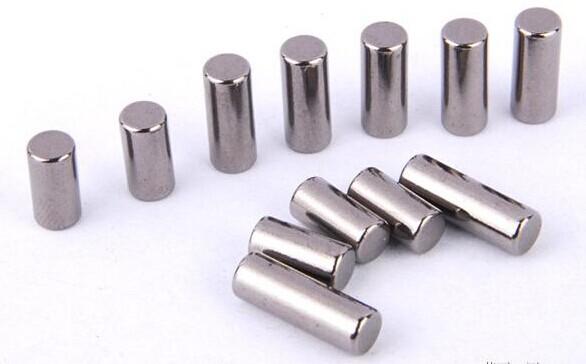What is Ferromagnetism
What is ferromagnetism?
If the atoms have magnetic moments in the material, they can be called magnetic materials. Iron, cobalt, nickel, and manganese have magnetic moments with their alloy atoms, which are common magnetic materials. Gold, silver, copper, aluminum, and other atoms have no magnetic moment and are non-magnetic materials.

But magnetism includes ferromagnetism, antiferromagnetism, spin glass, and so on.
In ferromagnetic materials (each arrow in the picture represents the magnetic moment of an atom).
The adjacent magnetic moments are arranged parallel to each other, showing ferromagnetism as a whole.
In antiferromagnetic materials, because the adjacent magnetic moments are antiparallel, the magnetic moments cancel each other, and the whole does not show magnetism.
There are several kinds of magnetic materials.
2. The arrangement of magnetic moments in ferromagnetic materials.
Only ferromagnetic materials are mentioned below.
For a large piece of magnet, its spontaneous magnetic moments will not be arranged in one direction.
Thus, although the material is ferromagnetic, it is divided into many magnetic domains that cancel each other out and there is no overall magnetism. Technically, this is the complete “demagnetization state” of magnets.
If the magnet is placed in a large magnetic field, all the magnetic moments can be pulled in the same direction, “saturated magnetization”.
For a hard magnetic material, the magnetic moment is still a single domain along one direction after the magnetic field is removed.
For example, the diagram above shows that the magnet is an N pole on the right and an S pole on the left.
Permanent magnets exposed to everyday life are made of hard magnetic materials. The so-called permanent magnetism is the removal of magnetic fields and magnetism.
For soft magnetic materials, the magnetic field is removed and returned to the “demagnetized state”. The magnetism disappears and there is no magnetic pole. Soft magnetic is usually used in the core of the electromagnet.
3. Effect of shape on magnet poles
First of all, the shape of permanent magnets in hard magnetic materials can be neglected. The distribution of magnetic poles is related to the material itself and the history of magnetization. That is to say, when saturation magnetization is initially performed in a large magnetic field, the N pole is in that direction in which the external magnetic field is applied. There is no difference between the ring type or the ball type.
So, if it’s a soft magnetic material, like Permalloy, then the distribution of magnetic moments depends on the shape, size, and so on, which is more fun.
First, for a disk, there may be magnetic vortices. The magnetic moments in the disk are arranged in a rotating arrangement, but the center is vertical.
Turn into a ring, that is, onion.
In these cases, it is difficult to define the traditional poles.
For more information, please visit https://www.usneodymiummagnets.com/